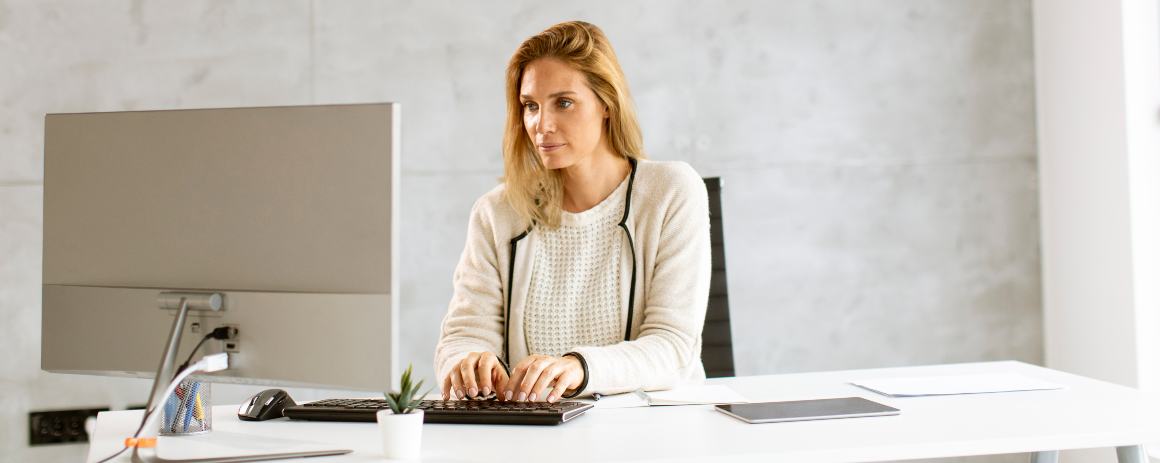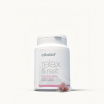20 desk stress relievers
Published:
Stress management is crucial for overall health and wellbeing. With many jobs requiring desk work, it's important to implement desk stress relievers to stay focused and productive throughout the day. This article explores 20 techniques to effectively reduce stress when working at a desk, including the use of CBD oil.
Contents:
- Understanding Workplace Stress
- Benefits of Managing Workplace Stress
- Take Regular Breaks
- Practice Deep Breathing
- Use CBD Oil
- Use a Desktop Diffuser
- Drink Herbal Tea
- Use Stress Relief Toys
- Listen to Relaxing Music
- Get Moving with Resistance Bands
- Massage Stress Away
- Burn Stress with a Desk Bike
- Tend to a Desktop Zen Garden
- Use Blue Light Blocking Glasses
- Set Up Proper Workstation Ergonomics
- Organize Your Desk Area
- Use a Himalayan Salt Lamp
- Drink Plenty of Water
- Use Noise Cancelling Headphones
- Set Reasonable Deadlines
- Use Stress-Relieving Office Supplies
- Allow Flexible Scheduling
- Relieve Workplace Stress for Success
- Frequently Asked Questions
- Resources used to write this article

Understanding Workplace Stress
The modern workplace can be filled with stressors like deadlines, multitasking, and distractions. Stress occurs when these demands exceed a person's coping abilities, triggering the body's fight-or-flight response. When stress is chronic, it can have serious health consequences like heart disease, diabetes, depression, and anxiety.
Finding ways to minimize stress is essential for both physical and mental health. Desk stress relievers target sources of tension directly in the office environment. They help clear the mind, refocus attention, and cultivate resilience.
Benefits of Managing Workplace Stress
Implementing desk stress relief techniques provides many advantages:
- Improves focus and concentration
- Increases productivity and task efficiency
- Enhances work satisfaction and engagement
- Reduces fatigue, frustration, and irritability
- Improves overall wellbeing and resilience
- Lowers risk of stress-related illnesses
With a deliberate approach, it's possible to create a workspace that facilitates calm, clarity, and inner balance. The following sections detail 20 evidence-based desk stress relievers to try, including the use of CBD oil.
1. Take Regular Breaks
Taking short breaks is one of the simplest and most effective ways to manage workplace stress. Stepping away from the desk helps relaxation and provides mental refreshment.
Aim to take a 5-10 minute break every 60-90 minutes. Get up and walk around, stretch, hydrate, or do light exercise. Build in longer 20-30 minute breaks for lunch or mid-day relaxation.
Taking regular breaks improves alertness, creativity, and focus when resuming work. It's an easy way to incorporate desk stress relief.
2. Practice Deep Breathing
When stress strikes, anxiety increases, heart rate goes up, and breathing becomes fast and shallow. Deep breathing exercises counteract this by activating the body's relaxation response.
At the desk, take a few minutes to focus on slow, controlled breathing:
- Inhale gently through the nose, feeling the belly expand. Count slowly to five.
- Hold the breath for a moment.
- Exhale slowly through the mouth. Count slowly to five.
- Repeat for a few minutes.
Deep breathing stimulates the vagus nerve and reduces cortisol levels. It's simple and can quickly induce calmness.
3. Use CBD Oil
CBD oil is growing in popularity as a natural stress reliever. Derived from cannabis, CBD oil contains relaxing properties without the psychoactive effects of THC.
When feeling stressed at your desk, place a few drops of CBD oil under the tongue. CBD interacts with receptors in the brain that influence mood and pain perception. With regular use, it can help lower anxiety and promote calm focus.
4. Use a Desktop Diffuser
Essential oils introduce pleasant aromas that can have immediate stress-reducing benefits. Certain scents like lavender, bergamot, and clary sage help promote calmness and clarity.
Use an essential oil diffuser at your desk to infuse soothing scents into the air. Add a few drops of oil and let the aroma spread. Breathe deeply to take in the calming fragrance.
Diffusing essential oils reduces tension, improves mood, and enhances concentration. Keep one running during stressful times or when focus needs a boost.
5. Drink Herbal Tea
Sipping a hot cup of tea is a comforting break that helps beat workplace stress.
6. Use Stress Relief Toys
Keeping your hands occupied with desk toys and fidget toys provides sensory relief from stress. Simple items like stress balls, silly putty, or bendable wire give an outlet for nervous energy.
Fidget toys help improve concentration during tedious or demanding tasks. Having a tactile desk accessory to manipulate reduces restlessness. The physical stimulation helps keep the mind calm and focused.
7. Listen to Relaxing Music
Music has inherent soothing properties that counter the effects of stress. Create playlists with slower tempo classical or ambient songs to promote relaxation.
Listen with headphones to block out workplace noise that may cause extra tension. Use music as a short mindful break to regain composure and decrease anxiety. It can quickly shift mood while working at your desk.
8. Get Moving with Resistance Bands
Don't have time to get away from your desk? Add some quick exercise with resistance bands. These stretchy elastic bands let you get physical activity without leaving your chair.
Do arm, shoulder, and leg exercises to get the blood flowing. Moving your body helps provide a release for mental tension. Just 5-10 minutes of focused movement leaves you re-energized. Maintain stress relief bands at your work station for anytime use.
9. Massage Stress Away
A desk massager allows you to relieve muscle tension right in your chair. Neck, back, and shoulder massagers use shiatsu kneading technology to target common areas where stress manifests.
Massage helps muscles unwind after long periods of sitting. The increased circulation and massage motion eases soreness and discomfort. Keep a massager within reach for instant relief when work conditions get hectic.
10. Burn Stress with a Desk Bike
A desk bike attaches underneath a standard work station to allow pedaling while sitting. This convenient option adds exercise into long sedentary days in front of the computer.
The continuous motion of light cycling boosts endorphin levels to reduce stress. It helps prevent restlessness while keeping the body active. Desk bikes burn calories, improve circulation, and support posture.
11. Tend to a Desktop Zen Garden
A miniature zen garden on your desk provides a convenient oasis to briefly escape stress. These contain sand or stones that you rake in calming patterns with a small tool.
The meditative ritual taps into relaxation. Focusing on raking the sand gives a chance to clear your mind. Desktop zen gardens are compact so you can re-center anytime.
12. Use Blue Light Blocking Glasses
Staring at computer screens all day can cause eye strain and headaches that compound work stress. Blue light blocking glasses filter out the blue-violet light wavelengths from screens that are hardest on eyes.
Wearing these tinted glasses reduces headaches, blurred vision, and fatigue caused by prolonged computer use. They allow you to work comfortably without worsening anxiety or distractions. The improved eye comfort means less stress.
13. Set Up Proper Workstation Ergonomics
Poor desk setup leads to back and neck pain, headaches, and generalized discomfort. This exacerbates an already stressful office environment.
Practicing good ergonomics relieves physical strain that worsens stress:
- Use a monitor raised to eye level
- Maintain neutral head position
- Keep wrists flat while typing
- Support lower back curvature
- Rest feet flat on the floor
Proper ergonomics prevent issues like carpal tunnel and spinal misalignment that increase tension and anxiety at work.
14. Organize Your Desk Area
A messy, cluttered workspace tends to induce stress and scatter focus. Set aside time to properly organize your desk area and keep it orderly.
Simple practices like putting items in assigned locations and clearing paperwork help create a calmer environment. Regular organization reduces frustration of lost items and clutter blindness.
Designate in/out boxes, filing systems, drawer organizers, and minimal decor to optimize your desk layout. An orderly workspace clears mental clutter as well.
15. Use a Himalayan Salt Lamp
Himalayan salt lamps purify and de-stress personal work zones. The bulbs inside warm the pink mineral salt, releasing negative ions that clear the air of dust and allergens.
This cleansing effect creates a soothing ambiance. The warm glow of a salt lamp is naturally calming. They look attractive on an office desk and help neutralize stress during the workday.
16. Drink Plenty of Water
Dehydration exacerbates feelings of workplace stress. Be sure to keep well-hydrated by sipping water regularly throughout the day.
Carry a water bottle to have available at your desk. Drink a full glass when waking up and between each snack or meal. Proper hydration energizes, while dehydration can induce headaches, fatigue, and cognitive issues.
17. Use Noise Cancelling Headphones
The cacophony of ringing phones, chatter, and office noises heighten stress levels. Noise cancelling headphones help mute these auditory distractions.
Listen to calm music or the sounds of nature while working. Noise cancelling technology filters out disruptive background noises so you can focus. The resulting quiet environment promotes concentration and reduces aggravation.
18. Set Reasonable Deadlines
Unrealistic work deadlines are a recipe for rushed errors and extreme stress. Be honest about job capacities and set reasonable deadlines that allow enough time for quality work.
Discuss workloads openly with managers when taking on new projects. Align on reasonable scopes, resources, and timelines. Ask for help when work becomes overwhelming. Setting expectations correctly prevents undue workplace stress.
19. Use Stress-Relieving Office Supplies
Even ordinary office supplies like pens and paper can provide sensory relief from stress when chosen carefully.
- Fountain pens give a smooth, fluid writing motion that satisfies the senses.
- Colored pens in bright hues uplift mood.
- Textured paper or notebooks feel pleasant under a pen tip.
- Kinetic sand or fidget putty ease nerves.
Upgrade standard office supplies to more pleasing and calming versions. It makes completing desk tasks more enjoyable and less stressful.
20. Allow Flexible Scheduling
For many, a strict 9 to 5 schedule is stressful and limiting. Seek opportunities for more flexibility in your daily routine.
Request options like:
- Earlier or later hours
- A mix of office and remote work
- Occasional half days
A flexible schedule provides better work-life balance. Adjust hours to match your personal chronotype and energy cycles. Accommodating different styles reduces burnout and improves focus.
Relieve Workplace Stress for Success
The office environment presents many demands that contribute to unhealthy stress levels. Implementing desk stress relief habits allows professionals to manage daily stressors.
Small adjustments like taking breaks, organizing workspaces, and utilizing calming accessories make a big difference. Consistent relaxation practices build resilience over time.
As a result, professionals remain engaged, focused, and energized. Mastering stress leads to greater productivity, less burnout, and more career success. Invest time into these desk stress relievers as an essential element of wellbeing while working.
Frequently Asked Questions
General Questions
What are desk stress relievers?
Desk stress relievers are techniques and items used in the workplace to reduce feelings of stress while working at a desk. They help minimize anxiety, frustrations, fatigue and promote relaxation.
Why are desk stress relievers important?
Chronic workplace stress can lead to burnout, lack of focus, diminished performance and health issues. Managing stress is essential for productivity. Desk stress relievers counteract the demands of desk jobs quickly and conveniently.
How do desk stress relievers work?
Desk stress relievers work in various ways. Taking short breaks gives mental refreshment. Essential oils and aromatherapy create calm. Fidget toys provide sensory relief. Standing desks improve posture and circulation. The techniques distract from stressors and induce relaxation.
When should I use desk stress relievers?
Use desk stress relievers whenever you notice tension building up during the workday. Take regular breaks to stay refreshed. Keep stress-reducing items within reach for immediate relief when frustration strikes. Make them part of your daily routine.
Techniques
What are some examples of desk stress relief techniques?
Deep breathing exercises, taking regular short breaks, listening to music, meditation, stretching and light exercise are examples of techniques to relieve desk stress.
How long should I take breaks when trying to relieve desk stress?
Take 5-10 minute micro-breaks every 60-90 minutes. Also build in 20-30 minute breaks for lunch and mid-day relaxation. Strive for a change of scene every two hours.
What are deep breathing exercises for desk stress?
Inhale slowly through the nose, hold briefly and exhale through the mouth. Repeat for 5-10 minutes. Keep shoulders relaxed. Deep breathing triggers relaxation responses and lowers blood pressure.
Can meditation help relieve workplace stress?
Yes, short meditations focus attention and promote calmness. Close eyes at desk, breathe deeply and repeat a calming word. Start with 2-5 minutes and increase over time. Apps provide guided meditations.
Equipment
What equipment can I use for desk stress relief?
Equipment like foot massagers, resistance bands, stability balls, desk cycles, massagers and online brain games relieve desk stress.
How do standing desks help relieve stress?
Standing desks allow you to alternate sitting and standing throughout the day. This improves posture, circulation and energy levels while working. The flexibility and movement reduce stress.
What benefits do stability balls provide?
Sitting on a stability ball engages the core muscles to improve posture and balance. The ability to bounce and roll subtly increases activity to counter sedentary stress.
How do foot massagers promote stress relief?
Massaging and kneading feet eases muscle tension and stimulates relaxation. Foot massagers under the desk provide stress relief anytime.
Accessories
What desk accessories can I use for stress relief?
Stress balls, fidget toys, desktop zen gardens, lava lamps, frames with inspirational quotes, hand massagers and doodle pads offer stress relief.
How do essential oil diffusers reduce stress?
Diffusing calming essential oils like lavender provides aromatherapy. Breathing the scent triggers relaxation and clarity. Oils also purify air.
What benefits do fitness trackers offer?
Fitness trackers encourage regular movement and breaks to avoid sedentary behavior. They provide positive reinforcement through step counts and movement goals.
How do desk plants reduce stress?
The presence of desk plants is soothing. Caring for plants fosters a sense of productivity and accomplishment. Plants also purify air and increase oxygen.
Lifestyle Factors
How does nutrition impact workplace stress?
Eating a balanced diet with protein, complex carbs, essential fatty acids and multiple servings of vegetables combats stress. Avoid excess caffeine, alcohol, sugary and processed foods. Stay hydrated.
Why is sleep important for managing workplace stress?
Adequate sleep (7-9 hours) recharges mental clarity, focus and mood control needed to handle workplace stressors. Insufficient sleep worsens ability to cope with demands.
Can exercise help manage work-related stress?
Yes, regular exercise releases endorphins and dulls tension from the sympathetic nervous system. Aerobic exercise is especially beneficial for combating work anxiety.
How does social support help relieve job stress?
Supportive connections with coworkers provides perspective and camaraderie to cope with workplace challenges. Friends also offer outlets for managing stress outside of work.
Resources used to write this article
McGonigal, K. (2015). The upside of stress: Why stress is good for you, and how to get good at it. Avery.
Mayo Clinic Staff. (2021, March 19). Workplace stress relief: Tips to reduce stress at work. Mayo Clinic. https://www.mayoclinic.org/healthy-lifestyle/stress-management/in-depth/workplace-stress-relief/art-20044439
American Institute of Stress. (2011). Workplace stress. https://www.stress.org/workplace-stress
Groenesteijn, L., Formanoy, M. A. G., Vink, P., & de Kroon, J. (2012). The effects of a lifestyle physical activity counseling program on stages of change and lifestyle physical activity. Work, 41(SUPPL.1), 1158–1161. https://doi.org/10.3233/WOR-2012-0353-1158
Grégoire, C. (2017, August 29). How to make stress your friend. TED. https://www.ted.com/talks/kelly_mcgonigal_how_to_make_stress_your_friend
Sood, A., Prasad, K., Schroeder, D., & Varkey, P. (2011). Stress management and resilience training among department of medicine faculty: A pilot randomized clinical trial. Journal of General Internal Medicine, 26(8), 858–861. https://doi.org/10.1007/s11606-011-1640-x
Mayo Clinic Staff. (2021, March 19). Stress relief from laughter? It's no joke. Mayo Clinic. https://www.mayoclinic.org/healthy-lifestyle/stress-management/in-depth/stress-relief/art-20044456
Kaspereen, D. (2012). Relaxation intervention for stress reduction among teachers and staff. International Journal of Stress Management, 19(3), 238–250. https://doi.org/10.1037/a0029195
Kinser, P. A., Bourguignon, C., Taylor, A. G., & Steeves, R. (2010). "A Feeling of Connectedness": Perspectives on a Gentle Yoga Intervention for Women With Major Depression. Issues in Mental Health Nursing, 31(6), 402–411. https://doi.org/10.3109/01612840903311860













